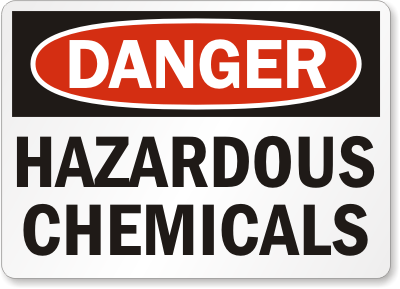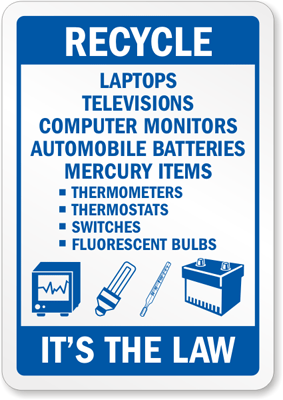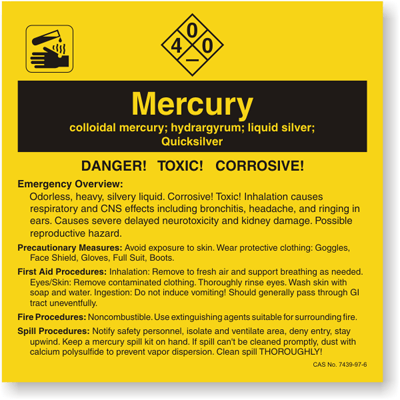OSHA Declares Light Bulbs A Workplace Hazard

OSHA finds fluorescent light bulbs pose health risk to workers (Via EHSToday).
August 8, 2012 — The Occupational Safety and Health Administration (OSHA) has identified an unusual workplace hazard—light bulbs, specifically, fluorescent light bulbs. These light bulbs contain mercury, a very toxic element, in vapor form. If a fluorescent bulb is crushed or broken, the mercury vapor can be released and pose a serious health hazard to anyone nearby. Mercury vapor has been proven to lead to certain nervous system disorderers, including manic depression, tremors, ataxia, insomnia, and memory loss.
Unlike Thomas Edison’s incandescent light bulbs, which rely on electricity and a filament, fluorescent light bulbs work via gases and chemical reactions. American Peter Cooper Hewitt patented the first mercury vapor lamp in 1901 but George Inman and Richard Thayer are credited with the first commercial fluorescent lamp, created in 1938.

Mats like these complement workplace safety programs (via Xpressmats).
Fluorescent bulbs work as follows: electricity passes through mercury vapor in a phosphor tube and produces short-wave ultraviolet light. That UV light, in turn, causes the phosphor to produce visible light. Fluorescent bulbs are more advantageous than incandescent ones because they’re cost less, last longer, and do not give off heat, while still providing the same amount of brightness.

The EPA classifies mercury as a hazardous waste (via MySafetySign).
However, because they contain mercury, fluorescent lamps are classified by the Environmental Protection Agency (EPA) as a hazardous waste. Therefore, the EPA recommends careful waste disposal and recycling practices.

Broken fluorescent light bulbs necessitate special recycling procedures (via RecycleReminders).
Similarly, OSHA is not imposing a new set of regulations, but has issued a new Quick Card guide, “Avoiding Mercury Exposure From Fluorescent Bulbs.” This alerts employers and employees to the hazards of mercury, and the necessity (and method) of proper cleanup procedures for broken fluorescent bulbs. Tips include: notifying workers to stay away from the area, airing out the area, wiping down hard floors with a damp paper towel, and placing the glass in a sealed plastic bag or jar for proper recycling.

Employers can inform employees to the presence of mercury with chemical safety labels (via ChemicalLabels).
Fortunately, fluorescent light bulbs contain very little mercury—less than 1/100th of the amount in a mercury thermometer. Nonetheless, fluorescent bulbs can still be dangerous, and employers should take certain precautions by letting their employers know where and how much, if any, mercury is located in the workplace.
– N. Gilliat














